A recent Heritage Foundation issue brief on nuclear weapons policy advocated, among other things, that the Trump administration withdraw from the 2010 New Strategic Arms Reduction Treaty (New START) and 1987 Intermediate-Range Nuclear Forces (INF) Treaty, as well as end consideration of ratification of the 1996 Comprehensive Test Ban Treaty (CTBT). Before undoing these deals, President-elect Trump should consider the consequences for U.S. national security. For one thing, the recommendations could prompt a new arms race—and give Russia a big head-start. That does not seem wise.
New START
The Heritage issue brief advocates withdrawal from New START, which limits the United States and Russia each to no more than 1,550 deployed strategic warheads on no more 700 deployed strategic missiles and bombers. Those limits take effect in February 2018. According to the September 2016 data exchange, the United States then had 1,367 deployed strategic warheads on 681 deployed missiles and bombers. Russia had more deployed warheads—1,796—but fewer deployed missiles and bombers—508.
The Heritage paper expresses concern about the disparity in warheads. What matters, however, are the numbers in February 2018. Russia has many outdated missile systems, such as the SS-18 and SS-19 intercontinental ballistic missiles, carrying a large number of warheads. They can be removed from deployed status over the next 14 months in order to meet the 1,550 limit.
The Heritage paper says Moscow “has demonstrated that it is not interested in a benign relationship with the United States.” That may be true, but that is no reason to withdraw from New START. Quite the opposite: Arms control treaties are more important with nuclear powers with which America has an adversarial relationship. New START’s limits cap the strategic nuclear competition, and the treaty’s data exchanges, notifications and inspections provide important information about Russian strategic forces. The U.S. military is not all that worried about the nuclear capabilities of Britain and France.
Arms control treaties are more important with nuclear powers with which America has an adversarial relationship.
The paper also cites Russia’s “massive nuclear weapons modernization investments” as a reason to abandon New START. It is true that Moscow is spending a lot of money to modernize its strategic forces. Most of that is going to replace old systems, including missiles that the Russian military would have replaced years ago had it had the funds. Flash forward to the mid 2020s. The Pentagon then plans to be building new ballistic missile submarines, intercontinental ballistic missiles, and strategic bombers to replace aging U.S. systems, which the Kremlin undoubtedly will term a “massive” modernization.
By all appearances, Moscow has sized its strategic modernization program to fit within the limits of New START. If Washington withdraws from the treaty, Russia has the option of continuing production of new missiles and submarines on already hot production lines. The United States could end up launching an arms race and spotting Russia a decade’s head-start. That does not seem to make sense for U.S. national security.
The INF treaty
The Heritage paper calls for withdrawal as well from the INF Treaty, which bans the testing and deployment of all U.S. and Russian land-based missiles with ranges between 500 and 5,500 kilometers. According to the U.S. government, the Russian military has tested a ground-launched cruise missile of intermediate-range in violation of the treaty. That is a serious problem, but it is not deployment. The Trump administration should consider that bringing Russia back into full compliance with the treaty—if possible—is preferable to the United States killing the treaty.
The Heritage recommendation seems to miss several key points. First, American allies in Europe and Asia want the treaty preserved, because Russian intermediate-range missiles would target them (those missiles do not have the range to reach the United States).
Second, the U.S. charge of a Russian violation remains shrouded in secrecy. If Washington withdraws from the treaty but does not present compelling evidence, while Moscow denies the charge, the United States would get the blame for the treaty’s demise.
Third, the Pentagon currently has no identified requirement or prospective funding for new intermediate-range missiles. Even if the United States proceeded to build them after withdrawing from the treaty, those missiles could hold targets in Russia at risk only if deployed on the territory of NATO allies, Japan or South Korea. The prospect that NATO would agree to accept new U.S. missiles is virtually zero. While some suggest that conventionally-armed intermediate-range missiles could address threats from North Korea or China, the likelihood that Japan or South Korea would accept them is very low.
The deployment of U.S. Pershing II and ground-launched cruise missiles in Europe in the early 1980s proved the key factor in getting Moscow to accept a treaty banning all intermediate-range missiles. But no one who went through that experience on the American side—I worked on this on the NATO desk at the State Department—would be eager to repeat it. The missiles were deployed, but the process almost broke NATO.
U.S. withdrawal from the INF Treaty at this point would mean that the political heat for ending the agreement would be directed at Washington. Russia would be free to test and deploy intermediate-range missiles…again with a big head-start, as the Pentagon does not even have plans for a U.S. counterpart and would have nowhere to deploy it. It is difficult to see how that would benefit U.S. and allied security interests.
The Comprehensive Test Ban Treaty
The Heritage paper could not propose withdrawal from the CTBT, as the United States has not yet ratified it. It instead recommends ending any consideration of the treaty’s ratification. The Senate did not consent to ratification in 1999, primarily due to concerns about detecting cheating and maintaining confidence in the U.S. nuclear arsenal without testing. But the Trump administration should consider the following.
A lot has changed since 1999. The CTBT Organization has built a monitoring system with some 300 stations around the world. Twenty-five of those promptly reported the North Korean nuclear test in September. The system can detect tests down to one kiloton (the bomb that destroyed Hiroshima was 14 kilotons). In some geologies, the system can detect even smaller explosions. U.S. national technical means have reportedly improved as well, but their precise capabilities remain classified. According to the National Academy of Sciences, tests as low as .1-.2 kilotons can be detected.
As for the U.S. nuclear arsenal, the United States now has 20 years of experience with the stockpile stewardship program. The directors of the national nuclear laboratories are confident that, with that program, they can certify the reliability of nuclear weapons in the U.S. nuclear stockpile without the need for explosive testing.
So the two questions that bothered the Senate in 1999 today have much better answers.
While the Senate has not consented to CTBT ratification, no one seriously calls for a resumption of U.S. nuclear tests. Mr. Trump might want to ask his friends in Las Vegas—60 miles from the former Nevada Test Site and with a population nearly triple what it was in 1992, the year of the last U.S. nuclear test—how they would feel about it. Recall that Nevada fought tooth-and-nail against even storage of nuclear waste at the site.
Moreover, the United States conducted more nuclear tests than the rest of the world’s nuclear powers combined and learned more from those tests. No country can match the U.S. stockpile stewardship program. The CTBT thus would lock in a U.S. nuclear advantage. How could that not be good for the United States?
President-elect Trump and his administration will have a full foreign policy in-box when they take office in 2017. They ought not to complicate their life further by undoing arms control deals that serve U.S. national security interests. They certainly should not take steps that would launch a new nuclear arms race with Russia when doing so would spot Moscow a significant head-start.
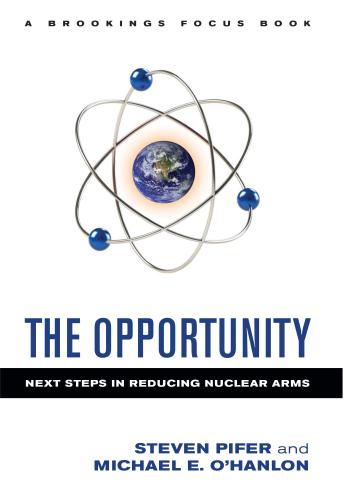

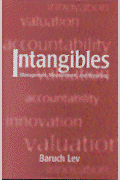
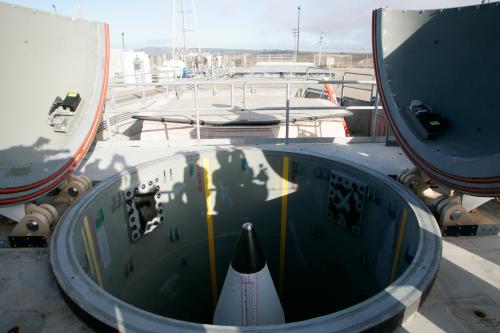
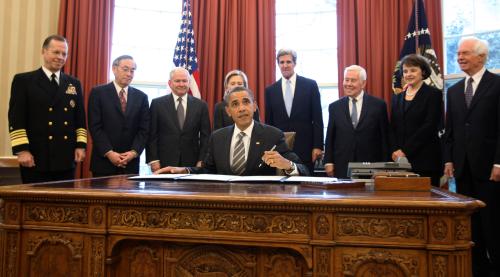
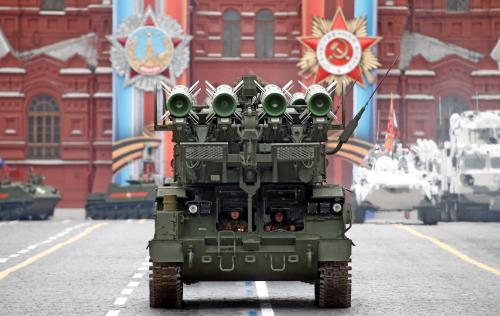




Commentary
The Trump administration and nuclear arms control treaties
December 2, 2016